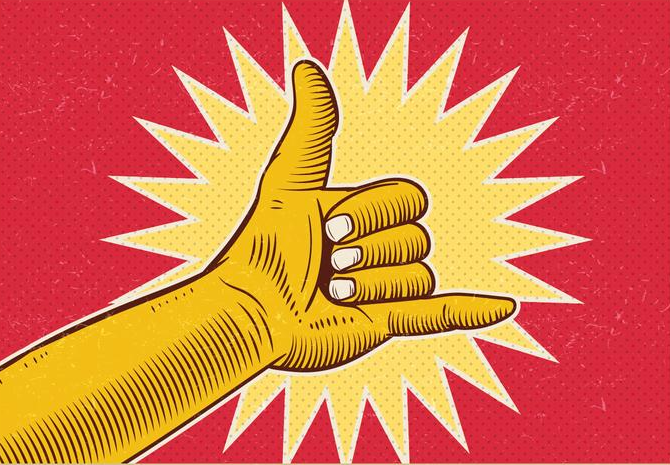The Shaka sign is a hand gesture where the thumb and pinky finger are extended, while the other fingers are curled into the palm, with the palm facing outward. Having become an iconic symbol in the world of surfing, this sign is not just a simple hand gesture; it is a symbol that carries deep cultural significance, representing friendship, respect, and positive energy.
The Origins of the Shaka Sign

The origins of the Shaka sign trace back to the Hawaiian Islands. Several stories are told about the emergence of this gesture, but the most widely accepted one dates back to the early 20th century. During that time, a sugar cane worker named Hamana Kalili lost three of his fingers in a work accident. Following this incident, Kalili began working as a security guard on the island, and children would try to travel without tickets in train cars when he wasn’t around. Kalili would signal the children to stop by making a hand gesture with his thumb and pinky finger extended. Over time, this gesture became popular on the island and became known as the Shaka sign.
Another story suggests that this gesture was used by native Hawaiians to greet whales or large waves they encountered at sea. Both stories reflect that at the core of the Shaka sign’s origins lies a friendly approach and positive energy.
The Cultural Significance and Use of the Shaka Sign

The Shaka sign in Hawaiian culture represents respect, friendship, relaxation, and tolerance. The local people use this gesture not just as a greeting, but also as a way to convey the message “enjoy life, be stress-free.” Especially in surf culture, the Shaka sign symbolizes freedom on the waves and harmony with nature.
Among surfers, the Shaka sign is also used as a signal of safety after encountering dangerous situations at sea. For example, after a big wave, surfers give each other the Shaka sign to indicate that everything is fine and everyone is safe. This gesture also reflects the values of solidarity, freedom, and harmony with nature within surf culture.
The Shaka sign has become recognized and embraced not only in Hawaii but around the world. Beyond surfers, this gesture is commonly used on the streets, beaches, and even on social media. Whether to greet, say thank you, or to convey that “everything is okay,” the Shaka sign is a simple yet deeply meaningful gesture.
Surfing and Shaka: A Lifestyle on the Waves

Surf culture is a lifestyle that integrates with the sea, waves, and nature. At the heart of this culture lies respect for the power of nature, harmony with the waves, and building strong connections with the people you share this experience with. The Shaka sign has gained a special place among surfers as an expression of these values. It is not just a gesture; it is also a symbol of brotherhood shared among surfers.
For surfers, the Shaka sign is used not only while dancing with the waves but also during relaxed moments on the beach, when resting on the sand after a surf session, or when thanking friends after successfully riding a wave. This gesture reinforces unity and solidarity among surfers and gives them a sense of being part of a “tribe.”
The Shaka sign also symbolizes the flexibility and adaptability of surf culture. The ever-changing nature of the waves and environment encourages surfers to enjoy each moment and be spontaneous. The Shaka sign perfectly reflects this free spirit and positive energy.
The Universal Message of Shaka

The Shaka sign has transcended cultural boundaries to become a universal language around the world. No matter where or by whom it is used, this gesture always carries a message of positive energy, friendship, and tolerance. Born from Hawaii’s local culture, the Shaka sign is now recognized as a symbol of global peace and goodwill.
The Shaka sign reminds us all of the importance of living life in a more relaxed, friendly, and positive way. Raise your hand, extend your thumb and pinky finger, and continue to keep this cultural heritage alive. Because Shaka is not just a greeting; it is also a way of embracing life.


